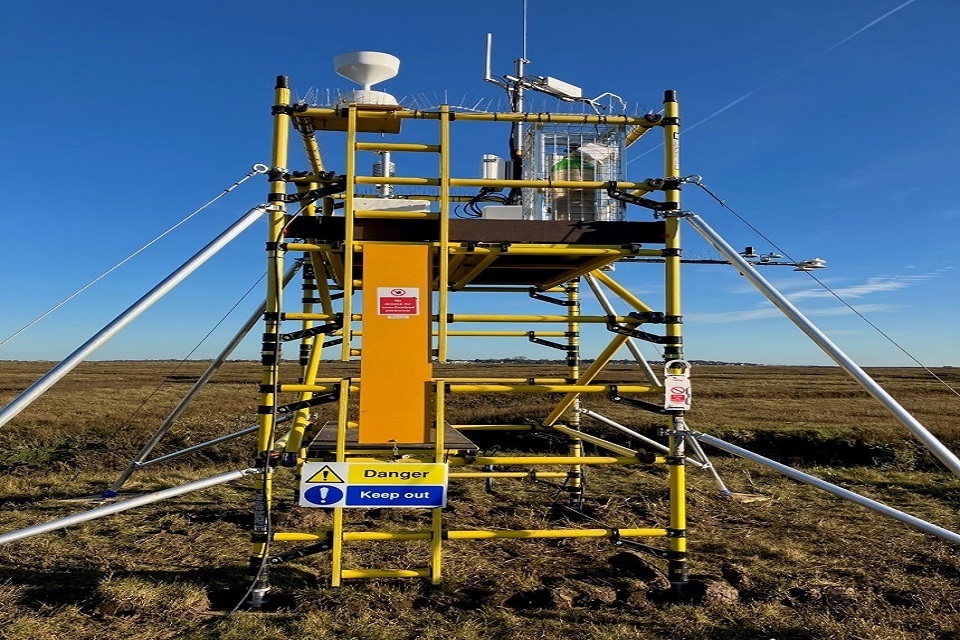The new project has seen the installation of a flux tower on a saltmarsh at Abbotts Hall in the Blackwater Estuary in Essex in partnership with the Essex Wildlife Trust.
The EA has worked in partnership with the UK Centre for Ecology & Hydrology (UKCEH) to purchase and install four flux towers on saltmarshes across England. This has been funded by the Defra marine Natural Capital and Ecosystem Assessment (mNCEA) programme.
Saltmarshes are important ecosystems that provide many valuable services, including habitat for a wide range of creatures. They also act as natural flood defences and help to capture CO2 from the atmosphere to store it in sediments. It is estimated that 85% of UK saltmarsh has been lost since the mid-19th Century.
However, although we know these ecosystems are valuable, there is a lack of data on how saltmarshes capture and store carbon. The tower at Abbotts Hall is providing long-term, real-time, data that can help our understanding of how saltmarshes function as carbon sinks now and in the future. Similar towers have previously been used on other types of habitats such as forests and peat bogs. Networks of these towers have provided vital data which has helped to encourage restoration and investment in these ecosystems.


